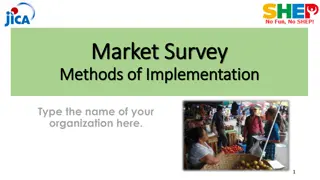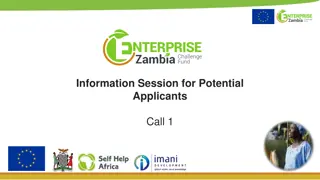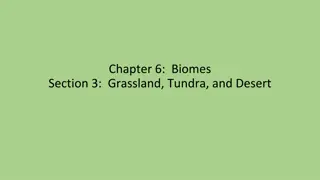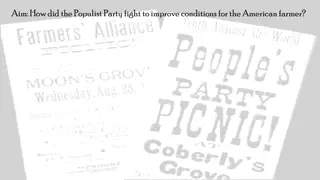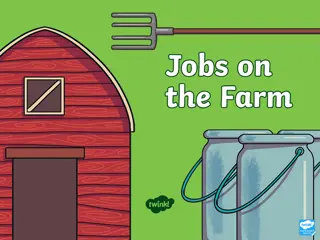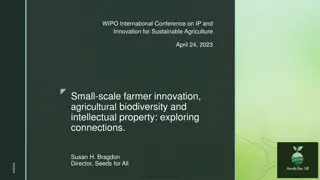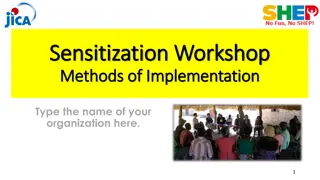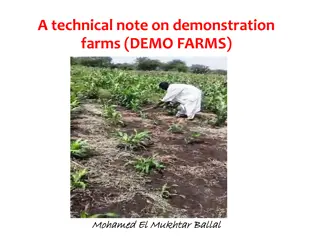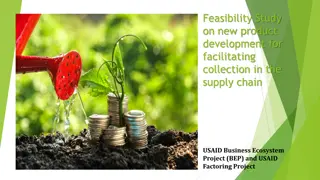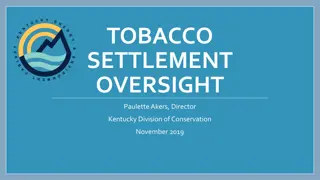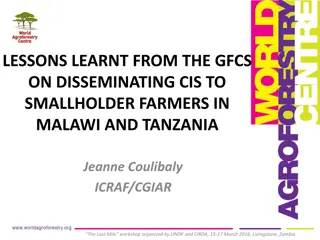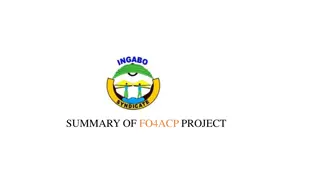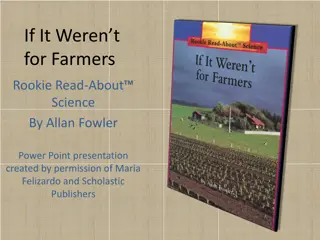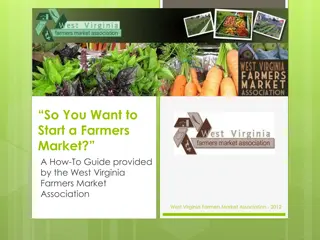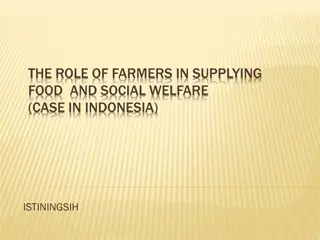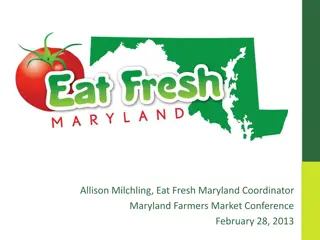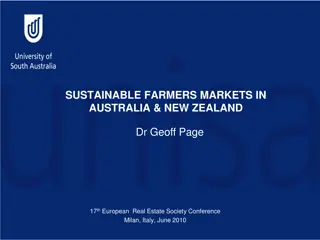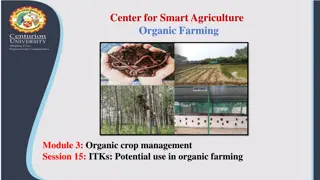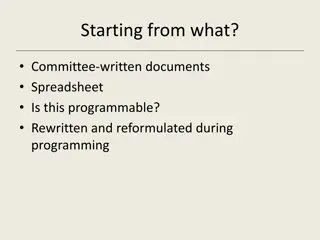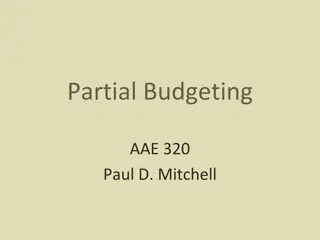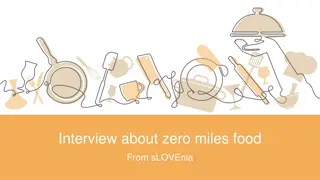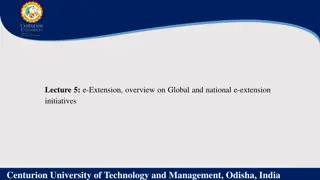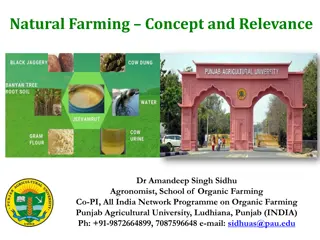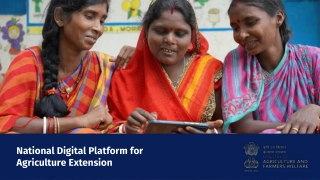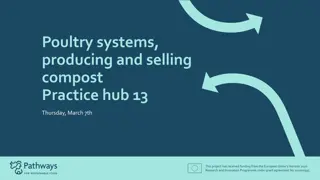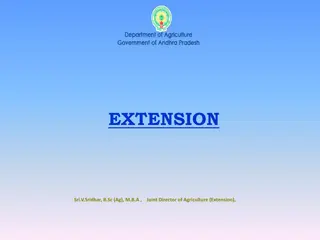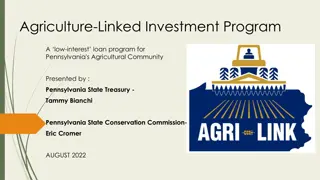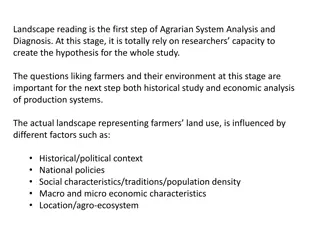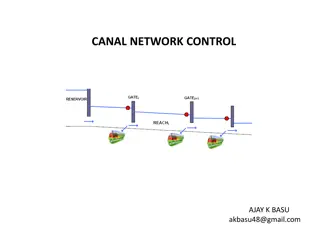Sustainable Grassland Management Tool for Farmers
Explore the Farm Level Decision Support Tool User Guide developed by the SUPER-G project for optimizing the management of permanent grasslands in Europe. This tool assists farmers in understanding the impact of their practices on ecosystem services and biodiversity, providing tailored recommendations for sustainable grassland management. Access the tool, register for an account, create reports, and make informed decisions to enhance productivity and support environmental goals.
- Grassland Management
- Sustainable Agriculture
- Ecosystem Services
- Farming Tool
- Environmental Conservation
Uploaded on Sep 21, 2024 | 0 Views
Download Presentation

Please find below an Image/Link to download the presentation.
The content on the website is provided AS IS for your information and personal use only. It may not be sold, licensed, or shared on other websites without obtaining consent from the author. Download presentation by click this link. If you encounter any issues during the download, it is possible that the publisher has removed the file from their server.
E N D
Presentation Transcript
FARM LEVEL DECISION SUPPORT TOOL USER GUIDE 1
About SUPER-G The existence and management of permanent grasslands (PG) is key to the delivery of multiple ecosystem services (ES) across Europe. However, PG maintenance and functions are under threat from sub-optimal management of inputs, cultivation and abandonment. The overall objective of the SUPER-G project was to co-develop sustainable PG systems and policies with farmers and policy makers that will be effective in optimising productivity, whilst supporting biodiversity and delivering a number of other ES. SUPER-G applied a multi-actor approach, working with farmers; landowners/ managers and their advisers; non-governmental organisations (NGOs) and policy makers to co-develop this Farm level decision support tool to support the maintenance and sustainable management of PG. The farm level DST This tool has been developed to help farmers to understand how your management impacts ES delivery and the multifunctionality of your grassland. Through answering a series of questions, you can assess how your management impacts ES delivery both intentionally and unintentionally. The tool also offers tailored advice on how to adapt your management to improve the score and also how this might impact other scores. This guide will take you through the tool and its controls. 2
Click here to access the tool 3
If you have already registered 1: Enter your email 2: Enter your password 3: Click SIGN IN If you do not have an account, click here to start a new account 4
Click here to start a new report 5
Enter an easily identifiable name for the land parcel, and the year that the report covers. If you have previously entered your farm s location you can select this from a drop-down list, alternatively you can add a new farm location Click here to add new farm location 6
1: Enter your email 4: Sign up to start your account Enter a name for the farm that the land parcel is part of, once you have entered the details, they are saved so you can add another land parcel to the farm if applicable. Once you have entered the details and click Submit your report will be visible on the Reports page 7
Delete reports at any time Click here to edit your report 8
Results from the report can be downloaded for future reference Select the Ecosystem Service you want to review Click here to enter or edit questions relating to that ES parameter Each ES has a list of ES parameters which are scored individually 9
When answering questions, you will only be required to choose from lists, or enter numeric answers, the input required is minimal. Any questions you answer will update your scores for both the selected ES parameter and any other ES parameter that is affected, allowing you to see the unintended consequences of management changes. 10
Each ES report is accompanied by a Summary of the ES being assessed The tool will provide you with an overall score (%) for the ES Tailored advice will tell you management interventions which can improve your score and how these may impact other ES. Each ES will have a traffic light score to illustrate performance 11


